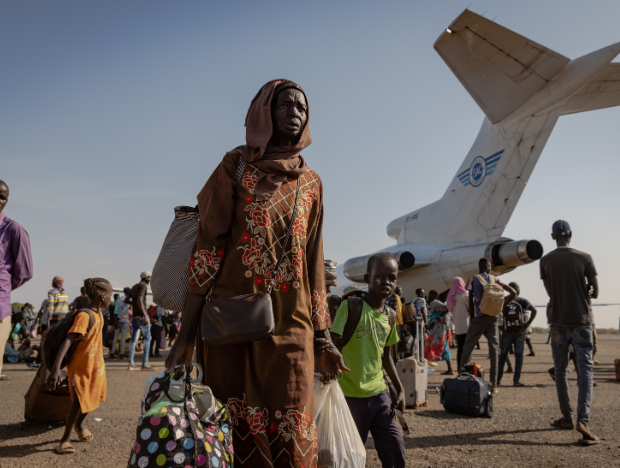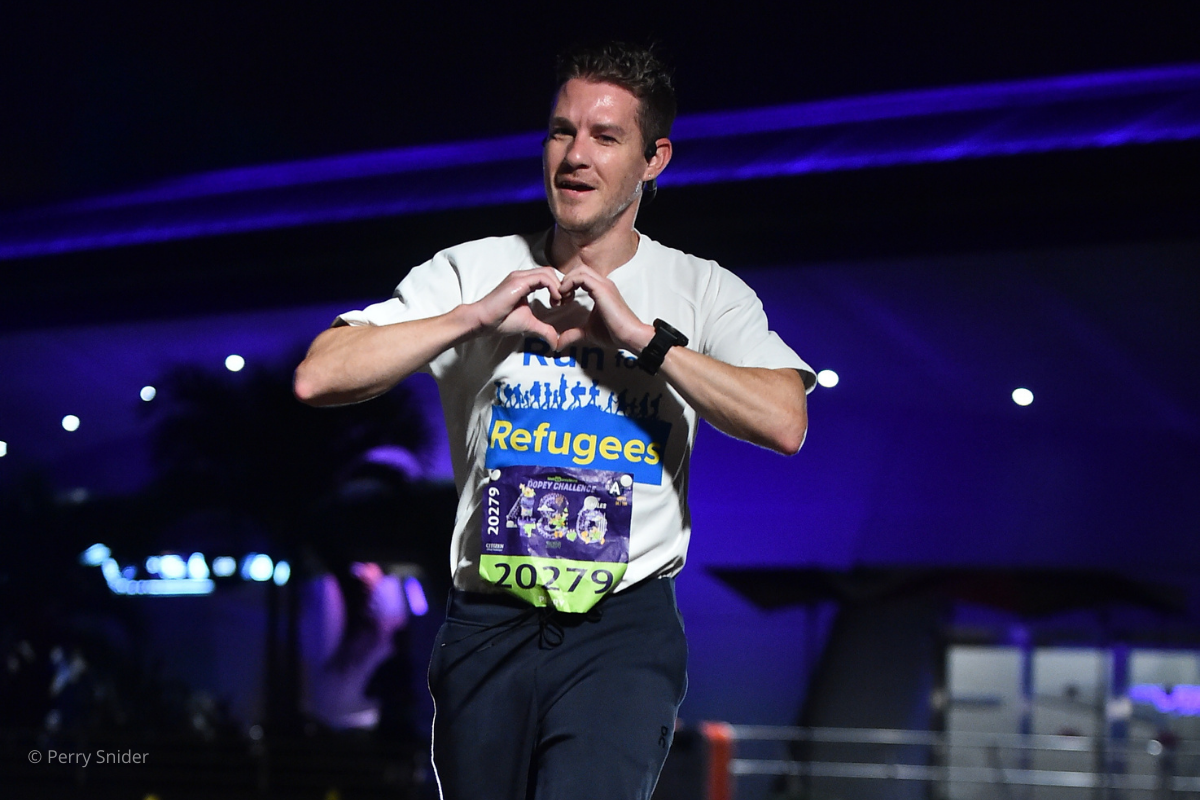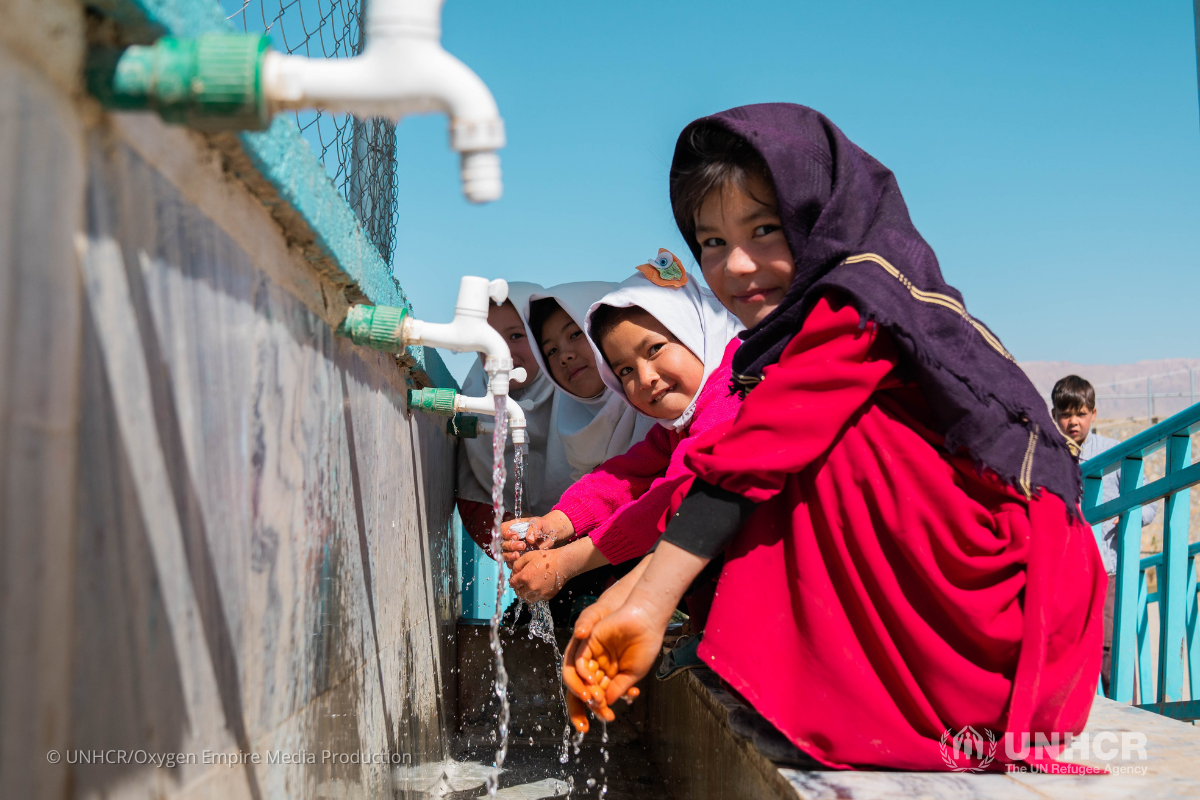Susan McPherson, USA for UNHCR board member
Having traveled extensively during my 50 years, I’ve witnessed extreme poverty and heart-wrenching situations, when I lived in Bucharest, Romania as a young child, volunteered my time in Kabul, Afghanistan and traveled as a tourist through remote parts of Laos, Vietnam and war-torn Sri Lanka. But none came close to what I witnessed first hand in the refugee camps and settlements in Kenya and Uganda. As a USA for UNHCR board member, my goal in visiting these camps was two-fold. One, I wanted to gain insight so I could authentically share the stories of individual refugees’ lives and two, I could help develop some unique business and entrepreneurial solutions to improve their livelihoods.
During our recent journey, we traveled to the Kakuma Camp in northwestern Kenya where over 200,000 refugees reside. It’s about a 2-hour flight from Nairobi and we made the trek on a Monday morning in early May 2015. The camp’s population consists of those that have fled from civil strife in South Sudan, Sudan and Somalia. The camp is also host to refugees from Ethiopia, D.R. Congo, Burundi, Rwanda, Eritrea and Uganda.
As soon as the airplane door opened, we immediately noticed the barren, dry land as far as our eyes could see. Trees were a rarity and massive amounts of dust was swirling about. Attempting to grow anything in this land’s soil would clearly be an extreme challenge.

Kakuma Refugee Camp, Kenya
UNHCR housing huts lay row after row. It was not a pleasant picture and it was clear that those living here faced enormous challenges to find work, raise their children and have any hope for a better future. Nonetheless, they had a safe place to escape to and were provided rations of water, food and electricity. What is unfortunate, however, is very few can return to their homelands for the foreseeable future and they must make the most of their current day-to-day lives.

An individual refugee’s 2-week food ration provided by UNHCR and UN World Food Program.
We met a South Sudanese mother who had walked over 350 miles while 8 months pregnant, carrying her two young children.

South Sudanese mother
We visited with 20 school students who ranged in age from 6 to 17, all in the same classroom. We met a group of men who were learning to type on computers in the technical training program using almost ancient Windows machines.
When asked why there were no women, we were told that so few complete secondary school and without doing so, they could not apply.
Following our visit in Kenya, we traveled to Uganda, a country that is known to be more hospitable to refugees as they are not forced to reside in camps, but rather are placed in “settlements.” Some also can live in urban locations such as Kampala, where we spent some time. During our visit to this sprawling city, we met with community refugee leaders who shared some of their challenges and struggles. Although, they are allowed to work under Ugandan law, given the high-rate of unemployment in the country, most urban refugees are unable find jobs. Many complained of lack of viable education opportunities for their children and less than palatable health care services. Part of the population fled from the Democratic Republic of Congo, speaks French and has lived in Uganda now for more than 10 years. Others fled from South Sudan, Rwanda, and other neighboring countries.
The remainder of our journey included two days spent in the Kwangali Refugee Settlement, a sprawling “village” located in the Hoima district in the southwestern corner of the country and only reachable via a long and arduous two-three hour drive over unpaved, bumpy roads. We visited an elementary school, which was in disrepair, but were welcomed by fifty-plus school children singing upon our arrival.

Children in school in Kwangali refugee settlement
We learned that there was only one secondary school to serve over 49,000 people and the actual number of students topped out at 400.
For many students, the journey that would need to walk each day would range from 15–19 kilometers. How could any parent feel comfortable sending his or her child on such a trek on a daily basis?

Young school children located in the Kwangwali Refugee Settlement in Uganda
The sheer isolation of the area was troubling and made one wonder how those who live there could ever actually consider being integrated into their host country.
During much of the journey one could certainly feel a sense of hopelessness. At many points, I found myself asking what could I realistically do to help improve these peoples’ lives. Finally, however, I found some optimism after meeting a young urban refugee, known as Ikayak Martha, a 24-year-old student born in South Sudan.

Martha lost her father when she was four. He was killed in the civil conflict in that country. With danger looming, Martha and her mother fled across the border into Uganda to the refugee settlement where her grandparents had already gone.
While no one would choose to live in such a place, there was one very real benefit that Martha would soon take to her advantage. The settlement had a school funded by UNHCR. If Martha had stayed in South Sudan, she would have had less than a 50/50 chance of ever attending school.
Then tragedy struck again. When she was in fourth grade, her mother died, and she was left in the care of her elderly grandparents. Thankfully, she had caretakers, but it could not have been an easy road for this young woman. Martha set her sights on secondary school. But secondary school cost money, and there was none. She would go no further, but she would not be alone. In that part of Africa, secondary education is a luxury few girls enjoy. Less than one South Sudanese woman out of a hundred completes secondary education. At this time, Martha became one of the fortunate girls. She became the recipient of a scholarship from Windle Trust International.
“My colleagues and I studied so hard,” she said, “bearing in mind that (education) was the only tool we could use to change the status quo.”
And that she did. Not only did she complete secondary school, she attended college. She applied to and was admitted to one of the most prestigious universities in Uganda. An uncle came through to cover the costs, but after two years the money was gone. Martha was forced to withdraw. However, one-year later, a program funded by one of UNHCR’s donor governments, Germany, came through with a program called the Albert Einstein German Academic Refugee Initiative or DAFI. “Armed with only the hope of a guardian angel to rescue my situation, I withdrew,”
At this time, Martha just completed the final requirements for graduation from Kyambogo University. She believes that her engineering degree will help her build a technology infrastructure that will bring Uganda into the developed world and is looking to the future with optimism.
Martha is a role-model for girls everywhere.
While she may not know it, what she has accomplished is insurmountable.
Students like Martha are needed so we can shine a light on the potential of refugees and refugee children around the world. Their numbers are growing and their potential is tremendous.
This article was originally posted on Medium by Board Member, Susan McPherson. Susan is a serial connector who believes business can be a force for good. She’s founder and CEO of McPherson Strategies, a social-good communications consultancy in New York City. She can be found often on Twitter at @susanmcp1.


